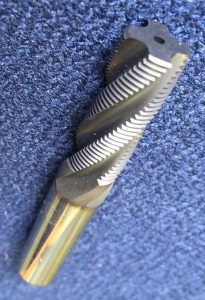Techniques include: smooth coated hard coating, smooth grinding edge, smooth edge prep and grinding, and smooth design to shrink the fit shank. Fee coatings including CHVD diamond, PHVD amorphous diamond, TiAlN, AlTiN, TiN, TiCN, TiB2, and so on. Workpiece materials after grinding, drilling, reaming, diversions of traffic, and more, including titanium (6, 4 v, 5553), stainless steel (303304316410420440 C, 15-5-4, 13-8316 L), the tool steel (A2, D2, H13), ordinary steel (1018102 0414 0434 0, P20),
Inconel(6325, 7318), cast iron, non-ferrous materials, including aluminum, copper, brass, bronze, wood & plastic, carbon fiber reinforced plastics, graphite, composite materials, glass fiber, etc. The industry includes aerospace, medical, electronic, automobile, semiconductor, mould, micro (nanometer) machining, carpentry and so on.
Mil – T free knife facts, tips and tricks
Level: note that the combination of hard alloy, edge prep and paint forms the insertion level (i.e., “52AT” or “5-2”).
Effective tool diameter: the cutting diameter of your free cutter will vary according to the selected insert. Cutting diameter (the outer edge of the insertion) will be equal to the diameter of the valve when the user is inserted. When the octagonal insertion is used, the diameter is reduced by 3/8 inches. When using
Round inserts, cut in diameter about 5/8 inch diameter. Inside the free cutting family, please note
A + + 45 separate insertion of the intubation (see below); The heavy responsibility series has this feature.
The thing to remember: • always use stainless steel (coolant can only be used when it’s light). 005-005)
- SHFPM and chip load recommendations are based on 2/3 cutter width and crawl milling
- recommended depth (DHOC) range from 025.150
- after completing the cut, keep the feed price unchanged, but increase the rotation speed by 10% to 30% per minute. 015.030
- recommended speed and feed are startup parameters and may need to be adjusted according to the material and the machine

